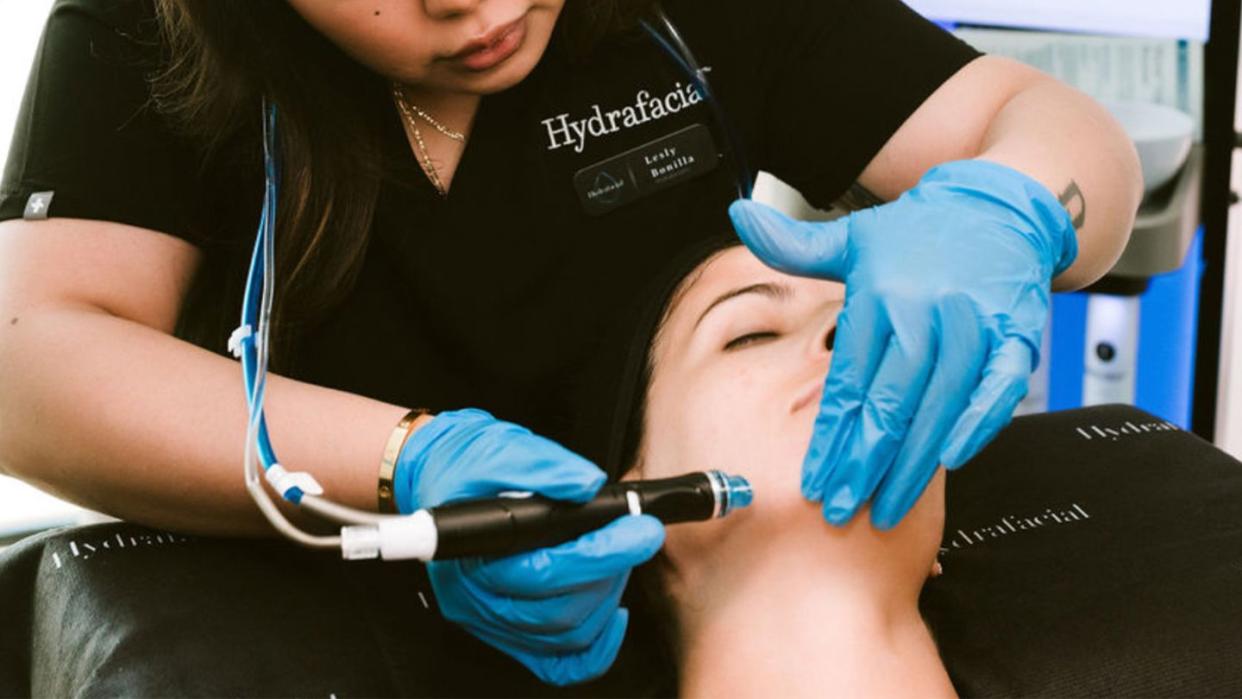The Hydrafacial Is Super Popular RN—Here's What You Need To Know

When it comes to in-office facial treatments, not many are as in-demand as the Hydrafacial is right now. In recent years, the treatment has become a phenomenon, since it targets multiple skin concerns at once—dryness, aging, and hyperpigmentation—in as little as one half-hour or 60-minute session, leaving you with a more radiant complexion by the time you leave your practitioner's office.
Sounds tempting, right? Before you book your appointment, read ahead to find out everything you need to know about getting a Hydrafacial.
Meet the experts: Brendan Camp, MD, is a board-certified dermatologist in NYC. Anil Shah, MD, is a plastic surgeon and owner of Aesthetic Skin Chicago.
What Is the Hydrafacial?
The short version: the Hydrafacial is an in-office procedure that deep cleans and hydrates the skin. The long version: “It’s a machine-assisted procedure that clears pores and addresses specific skin concerns with targeted serums,” says board-certified dermatologist Brendan Camp, MD. “In a single session Hydrafacials cleanse, exfoliate, extract, and hydrate the skin so that it’s more vibrant and youthful in appearance.”
A Hydrafacial treatment is typically completed in three parts: cleanse, extract, and infuse, says Anil Shah, MD, plastic surgeon and owner of Aesthetic Skin Chicago. During the first step, the skin is cleansed and exfoliated with a gentle peel to loosen dead skin cells and unclog pores before a vacuum-like device is used to painlessly extract the dirt and gunk from the skin in step two. The treatment should end with your practitioner infusing an antioxidant- or peptide-heavy serum into the skin for added protection and hydration.
Also worth noting: Hydrafacials are offered in most cities in the US, but all spas have to be licensed to perform them. When booking your treatment, make sure you're visiting someone who's a certified Hydrafacial practitioner.
What Are the Benefits of Getting a Hydrafacial?
Following your treatment, your result should be a brighter, more radiant complexion with a reduced appearance of pores, fine lines, and wrinkles. “Results like brighter, clearer skin are seen right away, though other concerns like anti-aging, acne, and hyperpigmentation can take longer to respond,” Dr. Camp says. To maintain results, it’s recommended that patients continue getting Hydrafacials every four to six weeks.
What Are the Side Effects of Getting a Hydrafacial?
Hydrafacials are generally safe for all skin types, but reactions aren’t uncommon. “One may experience tightness, redness, and sensitivity after receiving treatment, but these side effects often minimize after a day or two with proper home care,” says Dr. Shah.
To avoid having a bad reaction to the treatment—or to make sure you’re getting your money’s worth—Dr. Camp recommends avoiding makeup and direct sun exposure for at least 48 hours after your facial. “Some suggest stopping the use of potentially irritating products for two to three days before and after treatment, such as retinoids, benzoyl peroxide, and salicylic acid,” he adds.
How Much Does the Hydrafacial Cost?
As it goes with many beauty treatments, how much you pay for a Hydrafacial depends on a few different factors, location being a big one. That said, Dr. Shah says you can expect a Hydrafacial to cost anywhere from $150 to $350.
You Might Also Like

